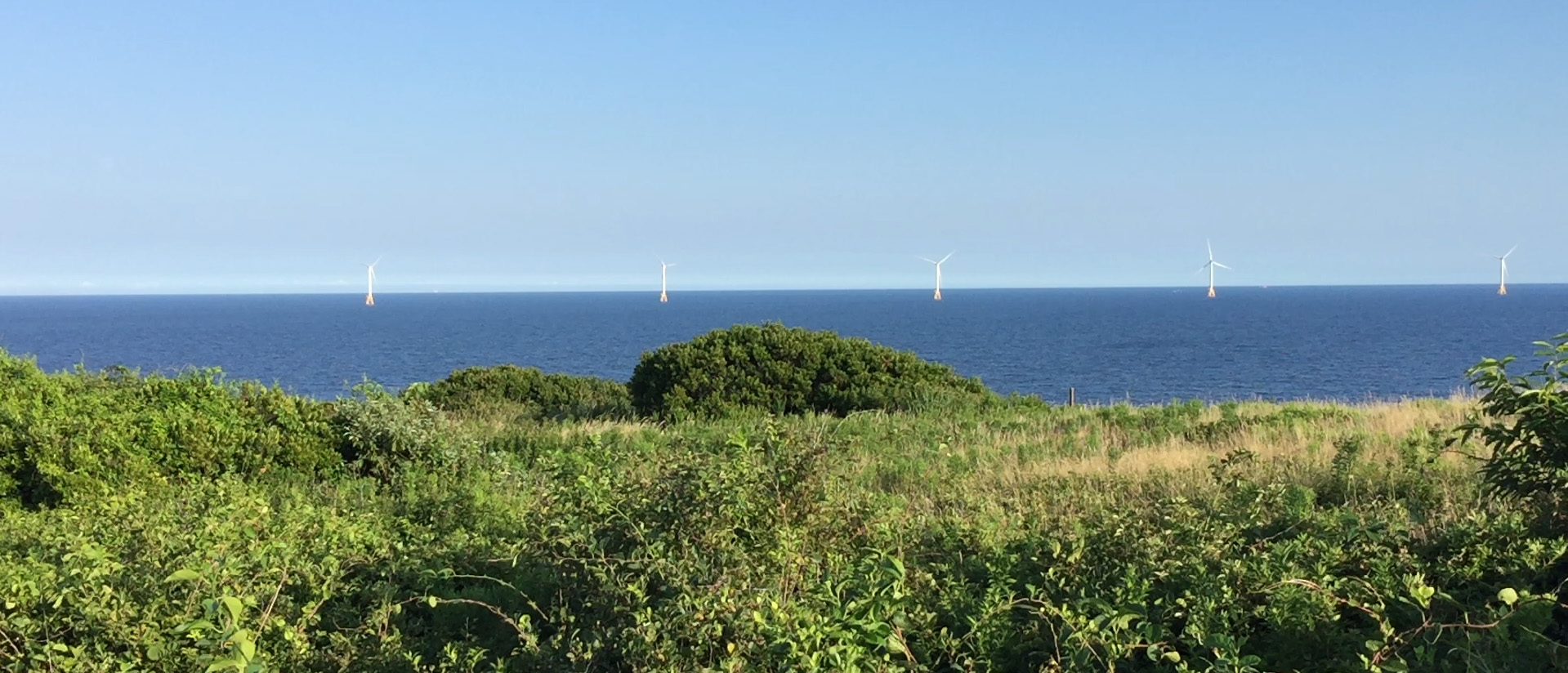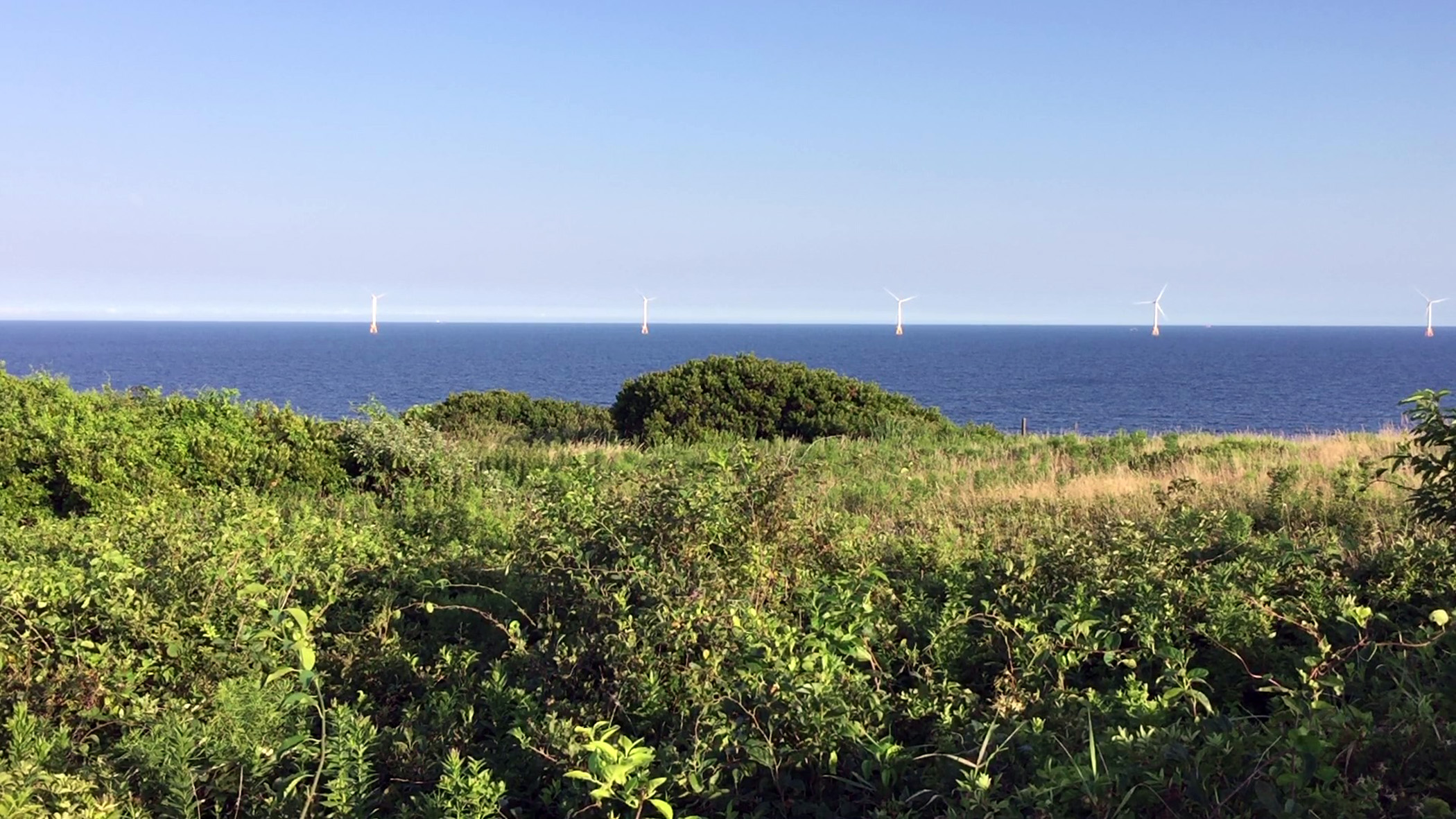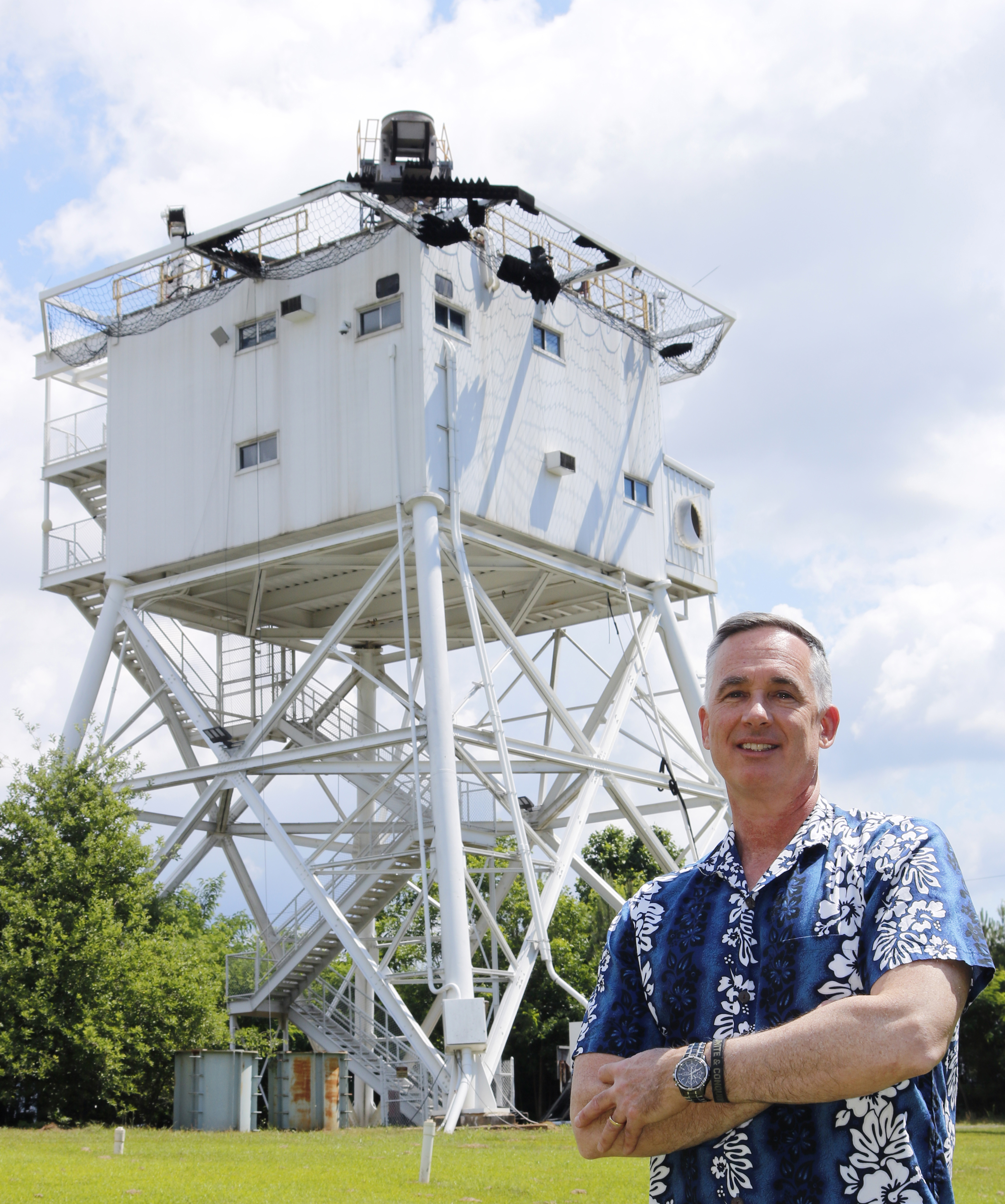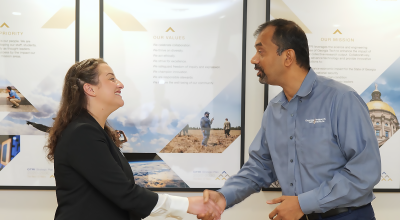
By the end of this decade, offshore wind turbine generators (WTG) could provide enough energy to power 10 million homes in the United States. But producing all that new energy carries a surprising downside for large cargo ships, fishing boats, and other vessels that use radar to help navigate congested coastal waters.
A recent study led by a Georgia Tech Research Institute (GTRI) specialist in sensors and intelligent systems documented the effects of wind turbines in creating potential confusion among ship operators using marine vessel radar (MVR) as a critical navigation tool. The expert study, done for the National Academies of Sciences, Engineering, and Medicine (NASEM), also identified potential ways to address the challenges of ensuring safe maritime navigation as wind farm operations expand in the coming years.

“This work informs decision-makers, helping them balance the nation’s energy needs against maritime commerce and safety,” said William Melvin, GTRI Deputy Director for Research, who chaired the six-member committee that conducted the study. “Understanding the ways wind turbines interfere with marine vessel radar and engineering mitigating solutions is an important undertaking to support the needs of the maritime stakeholder community.”
Energy Goals Call for Dramatic Expansion of Offshore Wind
In conducting the study, the committee gathered and organized information from open-source literature reviews and information-gathering sessions to make their conclusions and recommendations. The 10-month study was commissioned by the Bureau of Ocean Energy Management to help address concerns raised by the maritime commerce community about the potential impacts of WTGs.
A January 2021 executive order from the Biden Administration set a goal of deploying 30 gigawatts of U.S. offshore wind energy by 2030. Meeting that goal could add more than 5,000 wind turbines to the U.S. Outer Continental Shelf in the Atlantic and Pacific oceans, as well as in the Gulf of Mexico. But the towering steel wind turbine structures and their spinning blades produce radar returns that can clutter the displays used by ship operators – and potentially make small vessels more difficult to detect.
Large Structures and Spinning Blades Create Radar Clutter
“There are a number of factors that impact the display,” Melvin explained in a webinar held to highlight findings and recommendations in the report. “There are strong returns from the wind turbine towers themselves, and different opportunities for multipath energy bouncing in angles other than the true angle to the target. And because these are large objects, radar returns can also enter through the side lobes of the radar receiver and create a confusing picture to the operator.”

The resulting clutter can make it difficult for operators to understand what’s actually ahead of them, a critical challenge in bad weather or at night, especially when transiting busy shipping lanes. “The dominant effect is a strong increase in reflected energy that clutters the operator’s display and complicates decision-making related to navigation,” Melvin added.
Beyond the radar cross-section (RCS) reflectivity of the wind turbine structures themselves – which can be nearly 1,000 feet (300 meters) high – the spinning blades of the turbines create an additional source of interference. Doppler shift is a change in frequency caused by the interaction of electromagnetic energy with a moving object, in this case, blades that can be over 330 feet (100 meters) long.
“The rotating blades themselves, depending on the radar class, can also lead to Doppler-shifted returns,” Melvin said. “The Doppler returns would be suggestive of other moving targets within that range and angle. And, of course, the situation is complicated when we have ambiguous returns, as well.”
Other Radar Phenomena, Operator Response Create Challenges
In addition, multipath signals are created when radar signals bounce off other objects, such as components of the ship sending out the electromagnetic energy. Reflections created by multipath can suggest the presence of objects that do not really exist, creating additional issues for the radar system operator to sort out.
Confronted with interference and large returns from the wind turbines, MVR operators using older systems based on magnetron technology may respond by reducing the gain – essentially the sensitivity – of their systems. But doing so is equivalent to raising the detection threshold, which can make smaller vessels invisible to the radar. That could increase the risk of collisions and make search-and-rescue operations in wind farm areas more challenging.
Study Identified Potential Approaches to Addressing Concerns
To address these concerns, the committee identified both passive and active steps that should be evaluated for their potential to help make marine traffic and WTGs more compatible. Among them are:
- Training MVR operators to better understand how returns from WTGs affect displays and how to interpret information containing the large returns.
- Expanding the use of solid-state MVR systems that can better adjust to large structures such as WTGs and could be programmed to reduce the effects of interference. But replacing older magnetron-based radars ahead of normal cycles would be costly.
- Placing standard buoys near wind farms to provide reference RCS returns to help operators adjust MVR control settings.
- Standardizing radar mounting procedures on vessels to reduce the potential effects of multipath interference.
- Applying radar-absorbing materials to WTGs to reduce their overall signatures and standardizing tower shapes to make their radar appearance more consistent.
- Requiring small vessels to carry radar reflectors intended to make them more visible to MVR systems and stand out from the large returns of WTGs.
The committee report recommends additional research to help resolve the possible conflict between wind turbines and marine vessel radar. Steps could include more detailed data collection and modeling to understand the various ways that WTGs interfere with MVR, and a methodological approach to pursuing solutions from near-term actions to longer-term investments in both MVR and WTG technology, Melvin said.
A substantial body of research already exists regarding the operation of European offshore wind farms, but U.S. wind farms are wider, larger, and laid out in different configurations. In addition, new WTG configurations in development, such as vertical-axis turbines and floating turbine generators, could create different types of radar interference.
In addition to Melvin, committee members included Jennifer Bernhard from the University of Illinois at Urbana-Champaign, Benjamin Karlson from Sandia National Laboratories, Andrew McGovern from the New Jersey Sandy Hook Pilots Association (Ret.), Hao Ling from The University of Texas at Austin (Ret.), and John Stone from the U.S. Coast Guard.
NASEM Studies Provide Thought Leadership Opportunities
Like other members of the committee, Melvin was nominated to participate in the study. He said leading the committee effort was an honor, and a way to both serve the nation and advance GTRI and Georgia Tech as thought leaders in key technology areas.
“Involvement in NASEM studies and panels is a great way to impact the national dialogue on important technology issues,” he said. “It requires an added commitment of time, but the payoff to the institute, the research community, and personal reputation make it all very worthwhile.”
In addition to his role as Deputy Director for Research at GTRI, Melvin is an adjunct professor in Georgia Tech’s School of Electrical and Computer Engineering, and holds the title of Regents’ Researcher in the University System of Georgia. His research interests include all aspects of sensor technology development, electronic warfare, applied electromagnetics, signatures, systems engineering/developmental planning, autonomous/intelligent systems and machine learning, and threat systems analysis. He has authored numerous papers in his areas of expertise and holds three U.S. patents on adaptive sensor technology. He is the co-editor of two of the three volumes of the popular “Principles of Modern Radar” book series.
Melvin received a Ph.D. in Electrical Engineering, as well as MSEE and BSEE degrees (with high honors) from Lehigh University. He is also a distinguished graduate of the U.S. Air Force ROTC Program, and a graduate of the U.S. Army Airborne School and the U.S. Air Force Squadron Officer School.
Writer: John Toon (john.toon@gtri.gatech.edu)
GTRI Communications
Georgia Tech Research Institute
Atlanta, Georgia USA
MORE 2022 ANNUAL REPORT STORIES
MORE GTRI NEWS STORIES
The Georgia Tech Research Institute (GTRI) is the nonprofit, applied research division of the Georgia Institute of Technology (Georgia Tech). Founded in 1934 as the Engineering Experiment Station, GTRI has grown to more than 2,800 employees supporting eight laboratories in over 20 locations around the country and performing more than $700 million of problem-solving research annually for government and industry. GTRI's renowned researchers combine science, engineering, economics, policy, and technical expertise to solve complex problems for the U.S. federal government, state, and industry.



